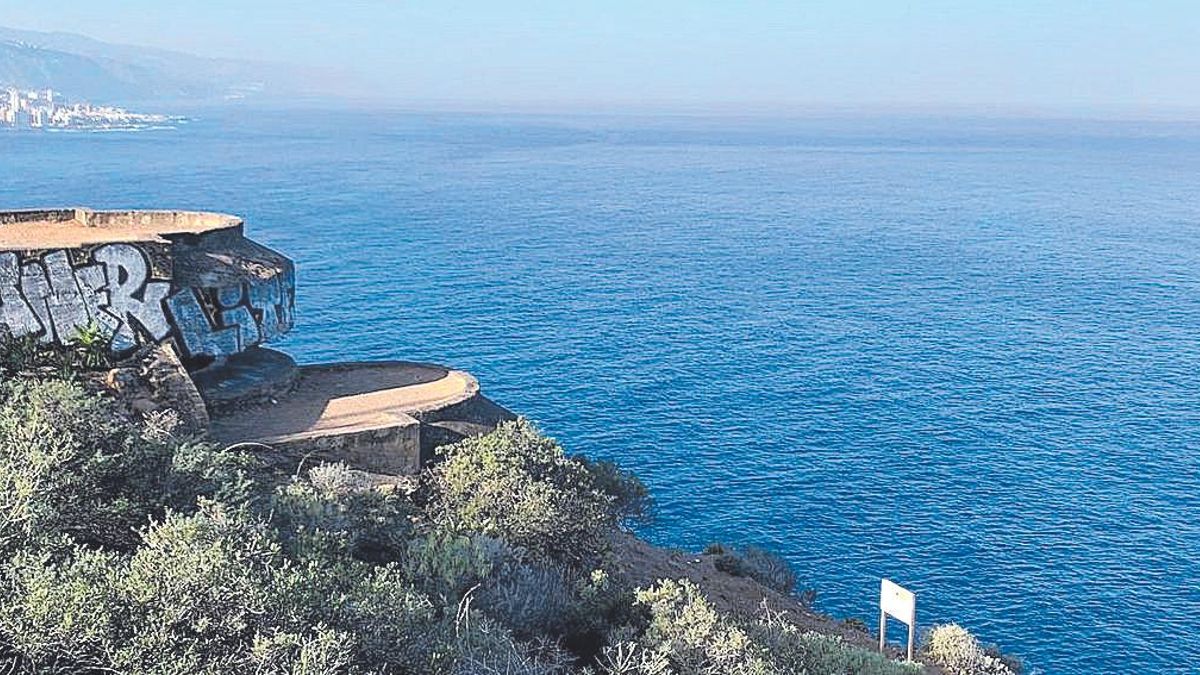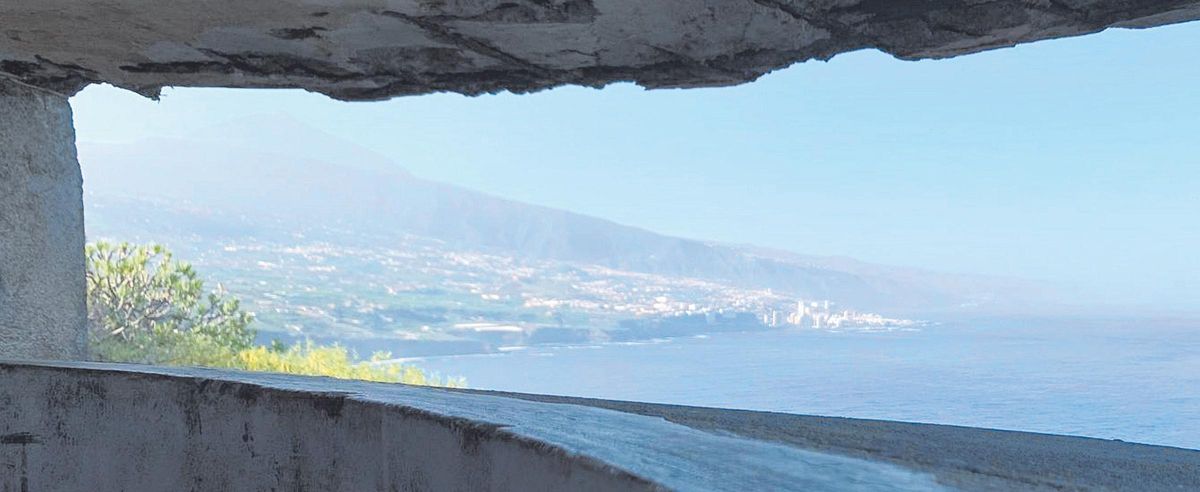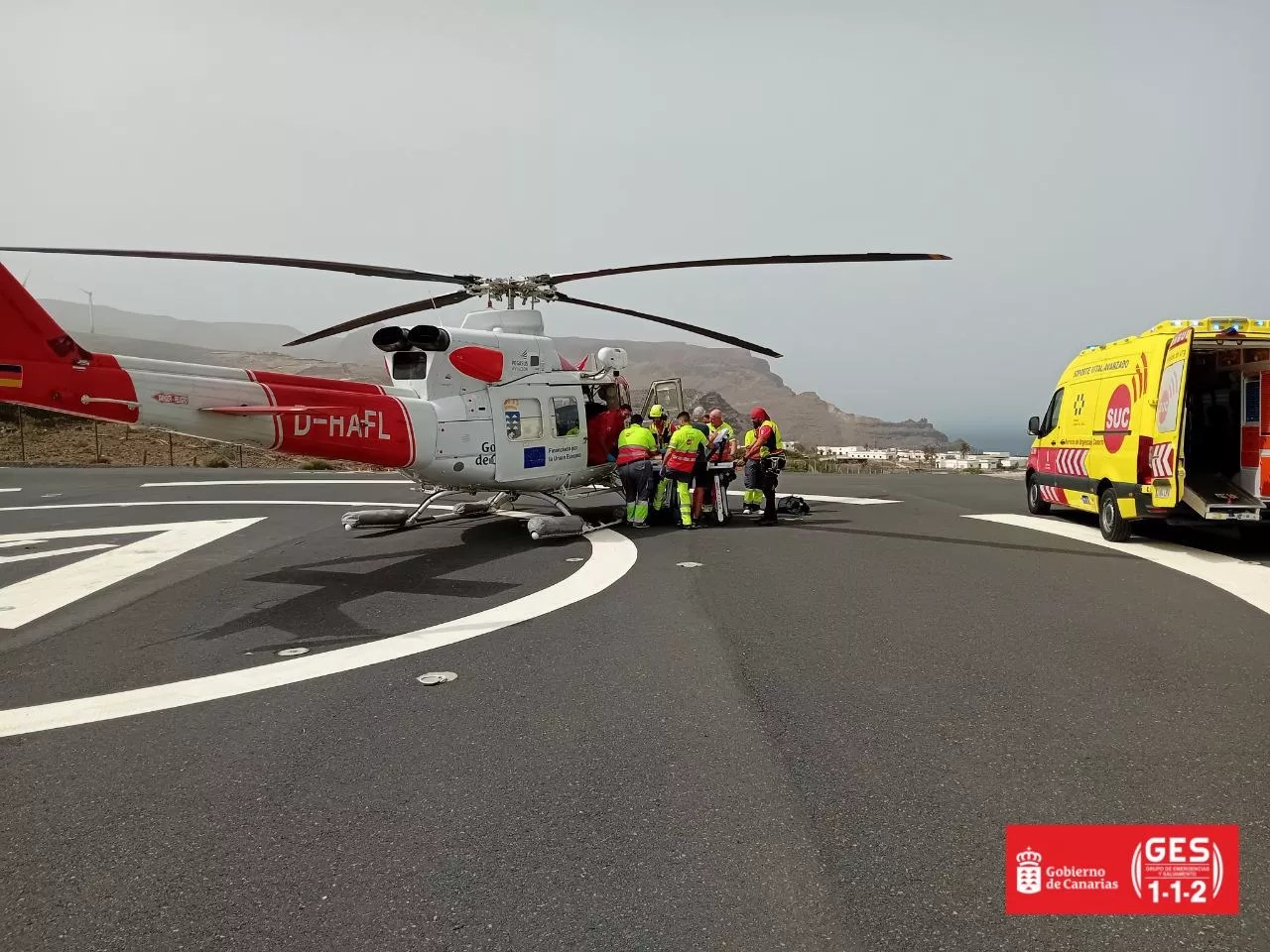
The La Quinta battery. /ED
There are locations that we frequently traverse yet remain unnoticed by the vast majority of individuals. Historical sites that recount chapters of our past, which, at times, may not have happened at all. This is the case of the Battery of the Fifth situated in Santa Úrsula. Coastal batteries are heavy artillery military installations that are positioned near the shoreline, primarily aimed at safeguarding a strategic area, an arsenal, or a vital passage against incursions by hostile forces. During the Second World War, the La Quinta battery became a geostrategic location for surveillance of the island’s northern coast in anticipation of a potential invasion. Following the conflict, this defensive structure was gradually forsaken, leaving only its fragile remains in a state of disrepair today.
Situated in a prime location, boasting a breathtaking panoramic view of the entire northern region of the island, it never achieved the purpose for which it was built. Currently, it awaits a much-anticipated restoration. Samuel Hernández, the Cultural Councillor of Santa Úrsula City Council, emphasises the Government of the Canary Islands’ commitment, in collaboration with the Council, to rescue this site from neglect and transform it into a centre of interpretation. In a recent meeting with the General Director of Culture and Cultural Heritage, Miguel Ángel Clavijo, advancements on this initiative were discussed.
Following the meeting, Clavijo remarked on the site’s significance, referring to it as “an absolutely distinguished spot within the municipality” and stressed the need to “capitalise on the extraordinary views available to promote” both “the role of the battery in the island’s defence, as well as the lesser-known archaeological history of Tenerife linked to this locale. The museographic initiative under consideration by the General Directorate of Culture and Cultural Heritage aims at showcasing the military history of the island, coupled with archaeological insights, since one of the commanding officers of this bunker, José García Borges, was instrumental in unearthing several Guanche archaeological sites, along with artifacts crucial for understanding the islands’ indigenous past.
According to the culture councillor, this interpretation centre “could represent a significant advancement for the municipality, and these initial measures are vital in redefining the new purpose of this exceptional site on Tenerife.” “During our discussions, we have recognised the importance of reclaiming that space and maximising its potential to discuss what that structure represented while also taking advantage of the sweeping views it offers as an observation point.”
Students Jonás García, Mario González, and Alejandro Estrada are well aware of the historical significance of the battery as demonstrated in their project for the Cultural Heritage Management course within their History degree. This commendable study, graded with honours, centres on the proposal to initiate the designation process for the Quinta Roja Command Post as an Asset of Cultural Interest, within the monument category.
In their research, they underscore the importance of this infrastructure, as it currently stands as the sole remnant of the original edifices, which were constructed to defend Tenerife’s northern coastline from allied forces during the years 1941 to 1957. They elucidate that their strategic placement was predicated on the necessity to monitor the coast extending from Punta del Guindaste (Los Realejos) to the jurisdiction of El Sauzal. The selection of Punta del Barranco Hondo de Santa Úrsula as the battery’s location stemmed from the potential for enemy landings on the coasts, due to the steep terrain and seabed, which only permitted small vessels to navigate—allowing oversight of the beaches in Puerto de la Cruz from that vantage point.

Panoramic view from the La Quinta battery, in Santa Úrsula. /ED
The original facilities encompassed a Command and Telemetry Post, a building for personnel accommodation positioned approximately 100 metres to the rear and near the hill on which the former golf club house was constructed, along with four mounted iron cannons of the Ordóñez model 1885, spaced around 85 to 94 metres apart. The research also highlights that “mention must be made of the utilisation of the Los Lirios I cave as a battery ammunition store (León, 2007), a storage purpose that ultimately led to the obliteration of a discovery, which Serra Rafols described as a treasure for Canarian archaeology. Accessing this cave required traversing a path that extended approximately 19 metres from the Command Post, located to the right of the structure, necessitating a significant distance to be covered from the magazine to the cannons.
Among the historical values, we can emphasise the microhistory of the life of the post’s captain, José García Borges, who during his military tenure in the vicinity played a pivotal role in the discovery of various sites in the Barranco Hondo area, including the Cueva de Los Lirios. In terms of architectural significance, it is worth noting that the Quinta Roja Command and Telemetry Post is architecturally and aesthetically the most comparable structure we can find along the coasts of the Canary Islands concerning the post-war context. This structure is constructed of reinforced concrete, a material renowned for its enduring properties.
The decision to classify it as a monument rather than simply a historical site is influenced by its contemporary significance and the Command Post and Telemetry in La Quinta, Santa Úrsula, which attracts numerous visitors unaware of its historical background and often misidentified. Consequently, the only designation applicable under the Official Gazette of the Canary Islands (BOC) to this potential BIC is that of a Monument, as the structure is crucial for contextualising the location and the history of the Canary Islands.
Jonás considers the value surrounding this structure to be remarkable. “We are not merely facing a representation of the military history of the Canary Islands in relation to a prospective assault from England; we must acknowledge that the battery occupies a site with aboriginal activity preceding its establishment and subsequently became part of the landscape of banana cultivation and the real estate development surge. “For this reason, I think it is vital to emphasise that the structure has persevered to this day as an integral part of the cultural landscape of north Tenerife. Despite its military origins, it is true that recreational activities occur around it that should also be acknowledged,” he elaborates.
Concerning the conservation status, the co-author of the research notes that “the structure is in good repair. While it’s true that there is considerable debris and graffiti within, it remains usable for the promotion of Tenerife’s cultural heritage.” “To me, this infrastructure’s significance lies in its endurance over time as a facet of the landscape and collective memory. When we discuss cultural heritage, we do not merely address the material; if we disconnect it from the territory in which it has been situated and the people who have imbued it with use and meaning, it would lose its value. Even without official designation, it maintains community relevance, as curious visitors frequently arrive to enjoy the stunning views or engage in various sports in the vicinity, which is what keeps it vital and active.
The efforts of these three young individuals shine a light on the historical importance of a site currently marred by graffiti. Now, it is only necessary to reach an agreement to bring this classification as a Monument to fruition and to facilitate its forthcoming restoration.
















